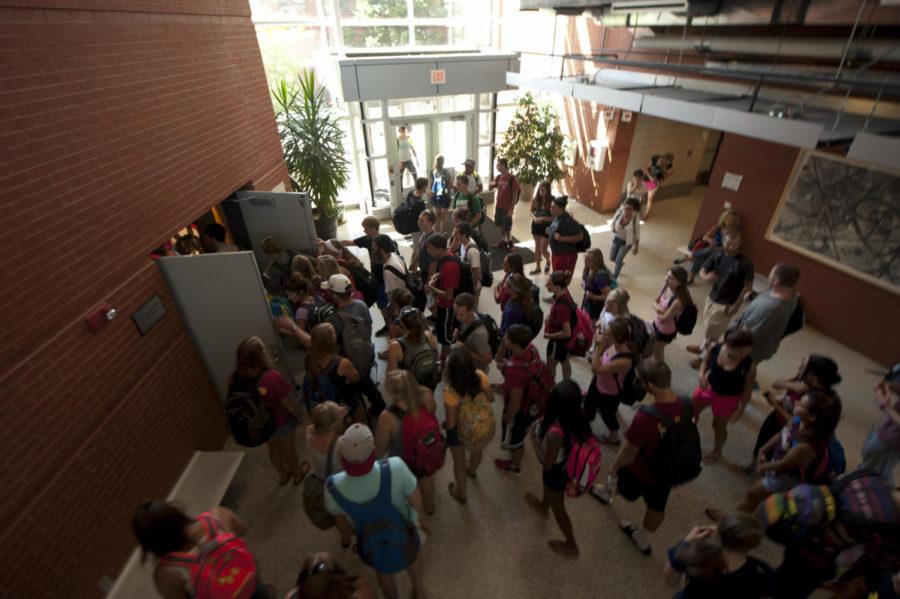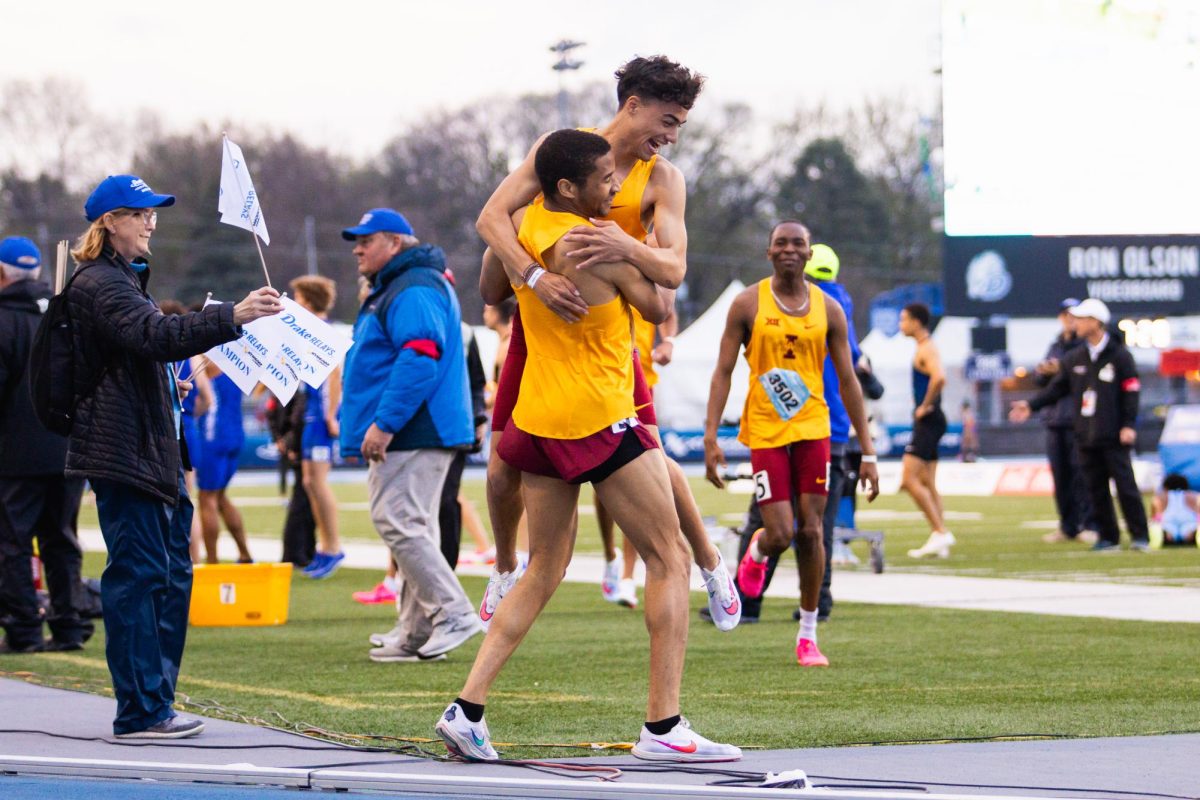Editorial: Rising enrollment strains students, campus resources
August 27, 2014
You’ve seen the sidewalks, you’ve seen the CyRide buses and you’ve seen the lecture halls. It’s the same story but a different school year.
There’s a lot of people out there.
During the 2013-14 school year, it wasn’t uncommon for a CyRide or two to pass by a stop because it didn’t have room for more riders. It’s simply unsafe to have overcrowded buses. But when four, five and even six buses blow by a stop of 10 or more students waiting for five to 10 minutes, a ripple effect occurs. Students are late to class, which leads to them being absent when attendance is taken and possibly hurting their grades if it’s a recurring issue.
And just think about what the winter months will be like.
With enrollment expected to surpass 34,000 students, Iowa State is on course for continuing in the future years to have record enrollment. At this point, packed buses and flooded sidewalks are no longer a shock but rather something for which most students are doing their best to prepare.
With the such a large population students, the safety concern of packed buses and lecture halls shifts to nearly every aspect of campus. From residence halls to the Memorial Union, living and traveling conditions are becoming more and more cramped. Simply getting in line takes 10 minutes at the Memorial Union during lunch hour.
The ripple effect goes the other way when the conversation is pushed to classes. More sections of important — and even required classes — were opened for the fall semester. With that said, professors are required to teach more, prepare more, grade more and overall work more. The argument of compensation for the added hours is an understandable one.
The increased enrollment itself isn’t the issue at hand. The overwhelming interest in Iowa State should make students feel like they’re attending a high caliber institution, which is exactly the case. The problem is the university can’t keep up with the pace of which students are flooding in. Simply put, it’s supply and demand.
The demand for more residence halls, food options, CyRide buses, sidewalks and more are currently outweighing the supply of those features. Sidewalks are becoming clogged arteries and it’s becoming nearly unreasonable to expect to make it from Forker Hall to Carver Hall in 10 minutes with the bikers, commuters and slow pokes walking during the morning class hours.
The best solution for this would be to encourage a push for classes during either evening hours or even just during the later afternoon. The demand for 9, 10 and 11 a.m. classes is high because of club activities, work or the simple need for relaxation after a “long day of classes” leaves abundant space in 2:10, 3:10 and even 6 p.m. classes for those who don’t have conflicts then.
It isn’t ideal and it isn’t what everybody wants, but when is it ever what everybody wants? For the students here on campus this year, and probably in the next couple of years, it’s going to take patience and compromise. The university is in talks about the changes that are going to have to be made to ensure that as the enrollment rates continue to increase, students’ needs will be prioritized.

















